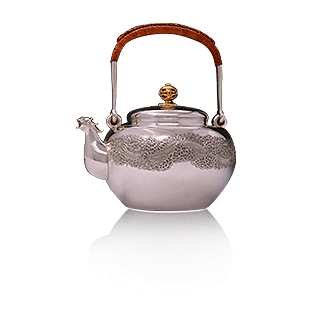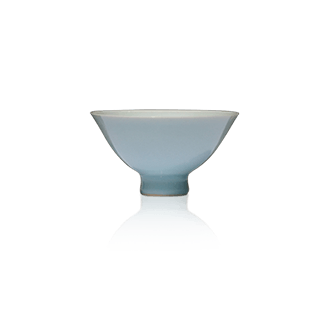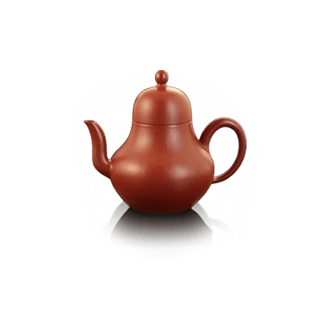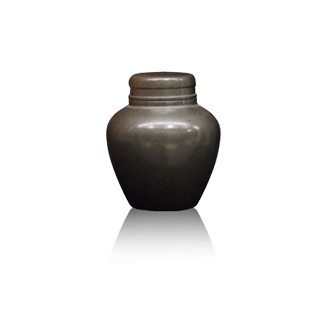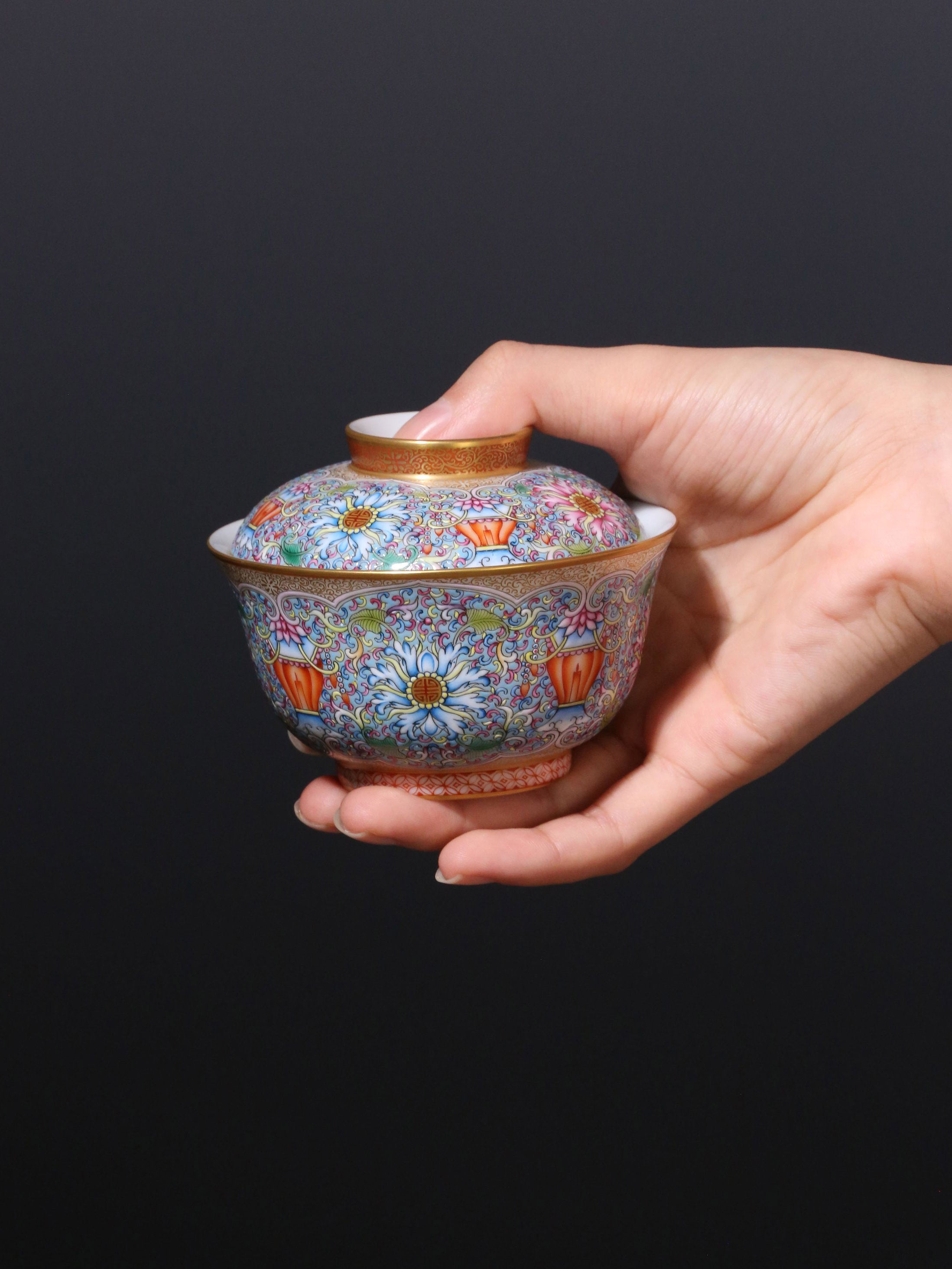





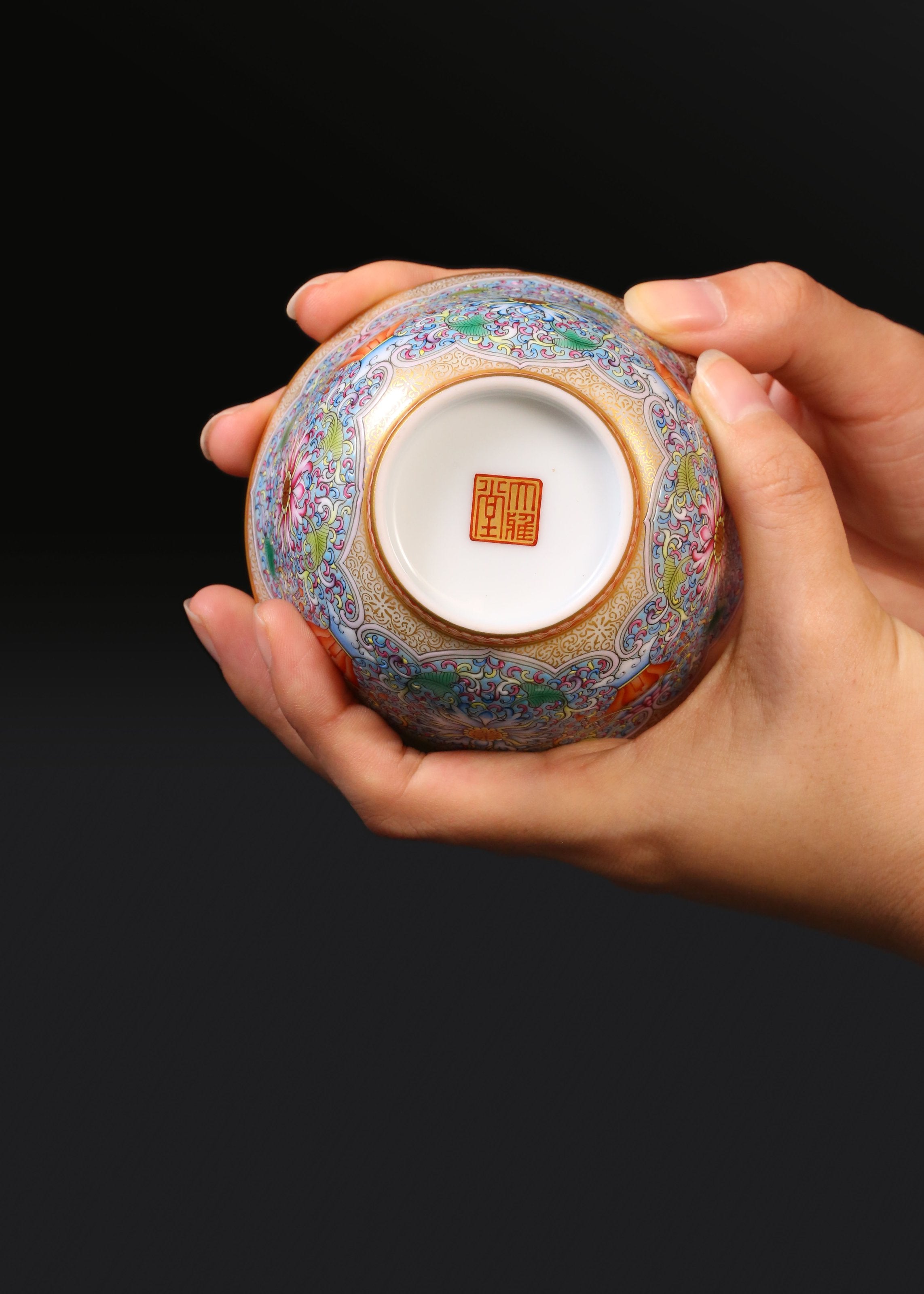

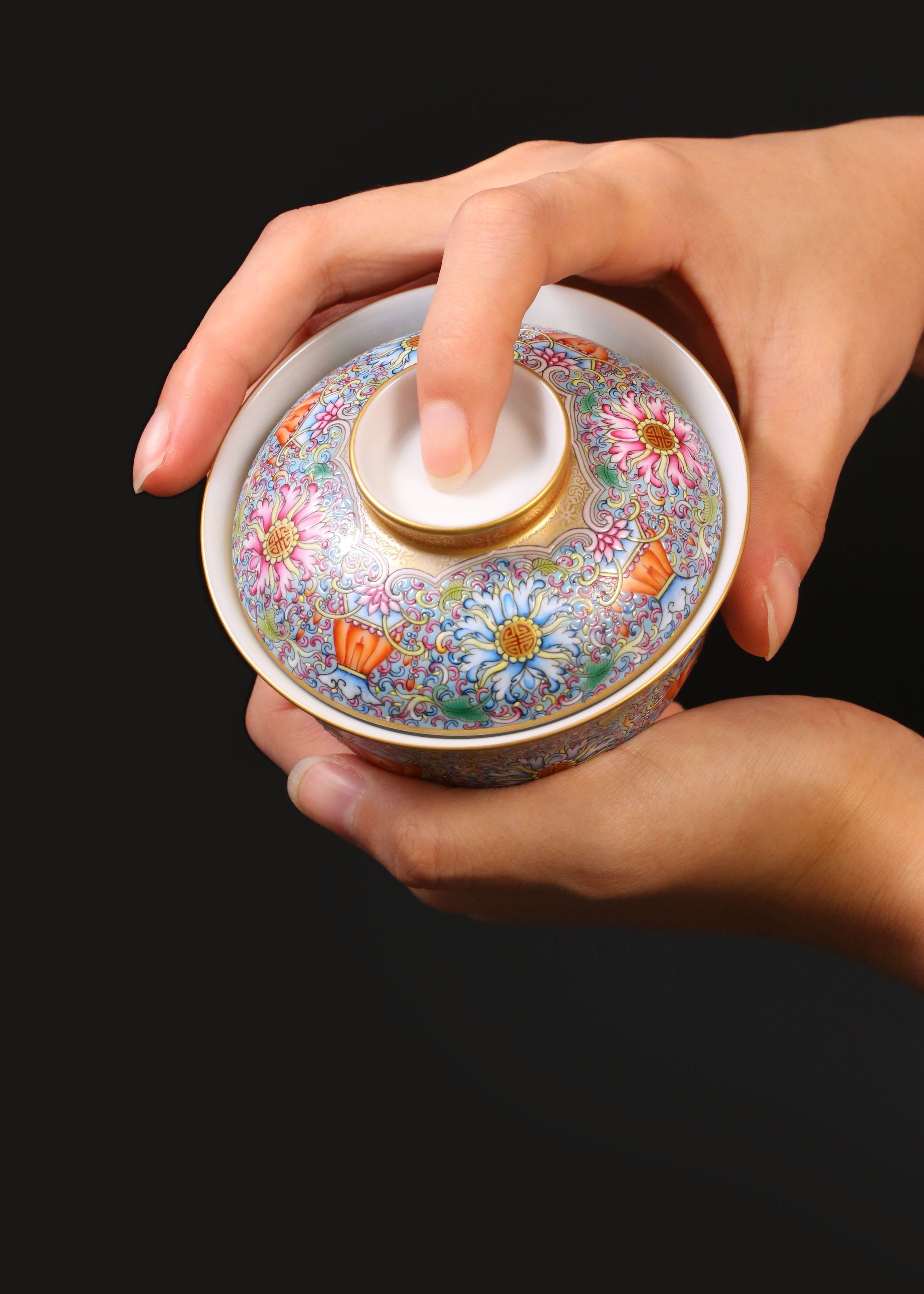
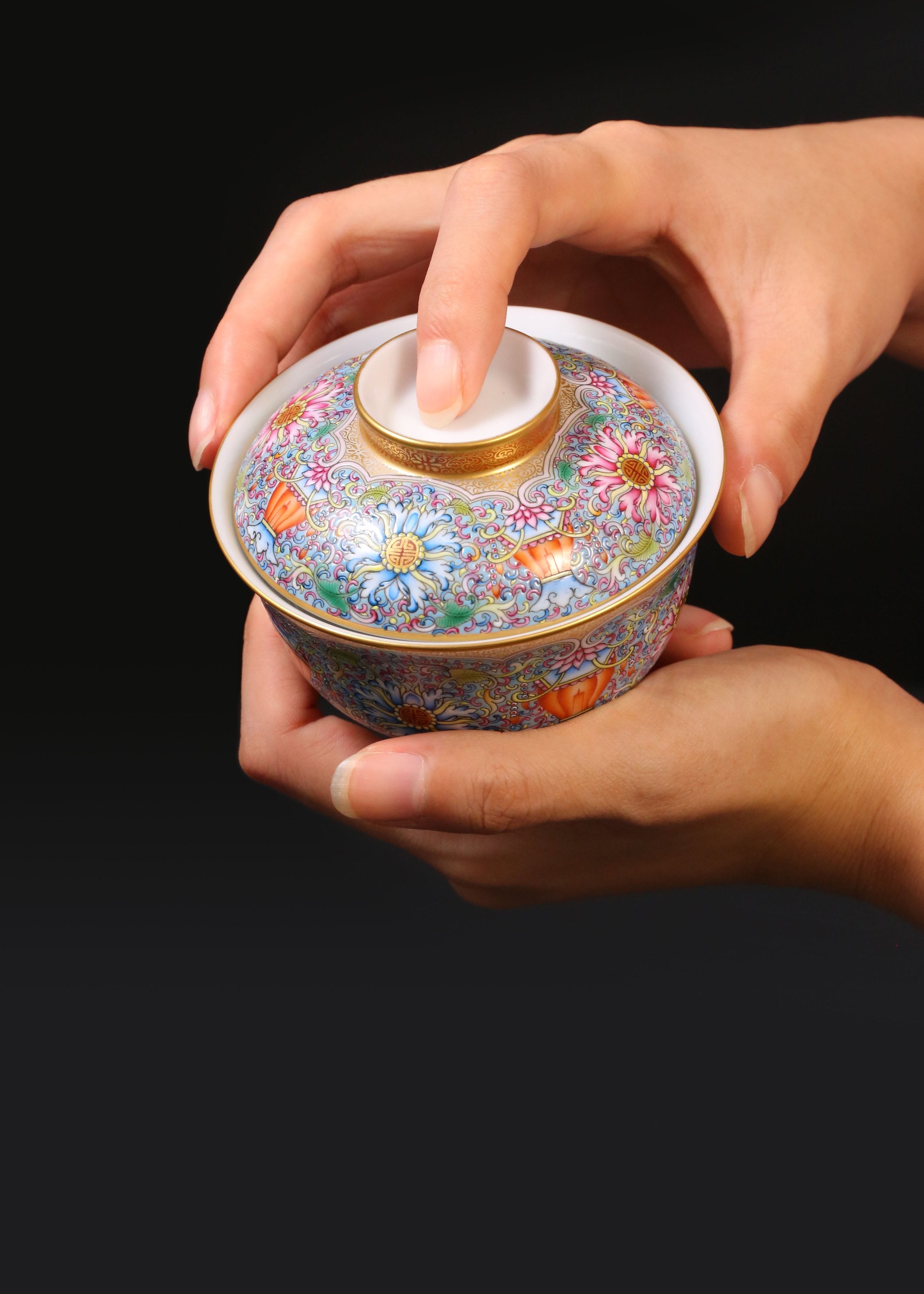



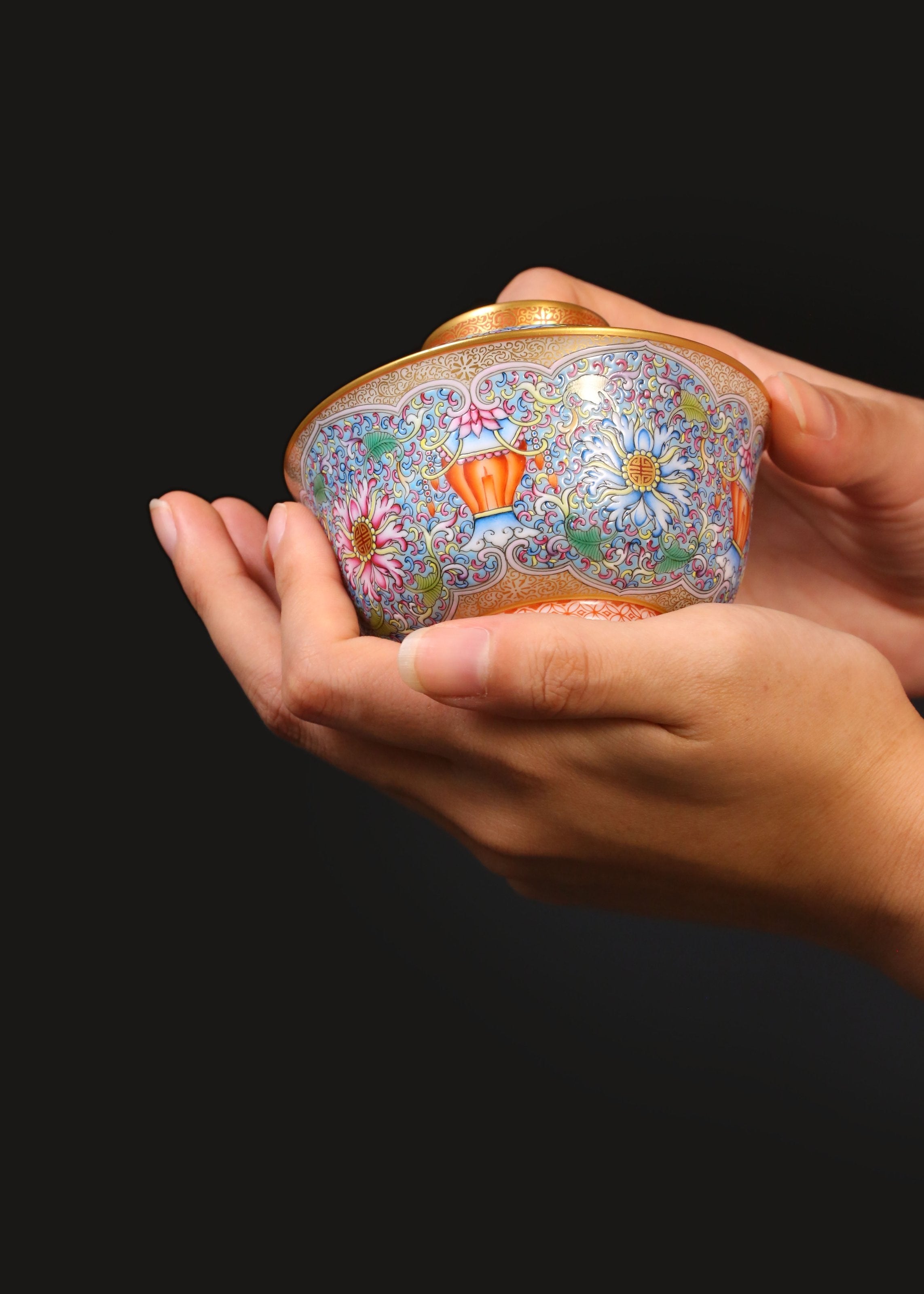







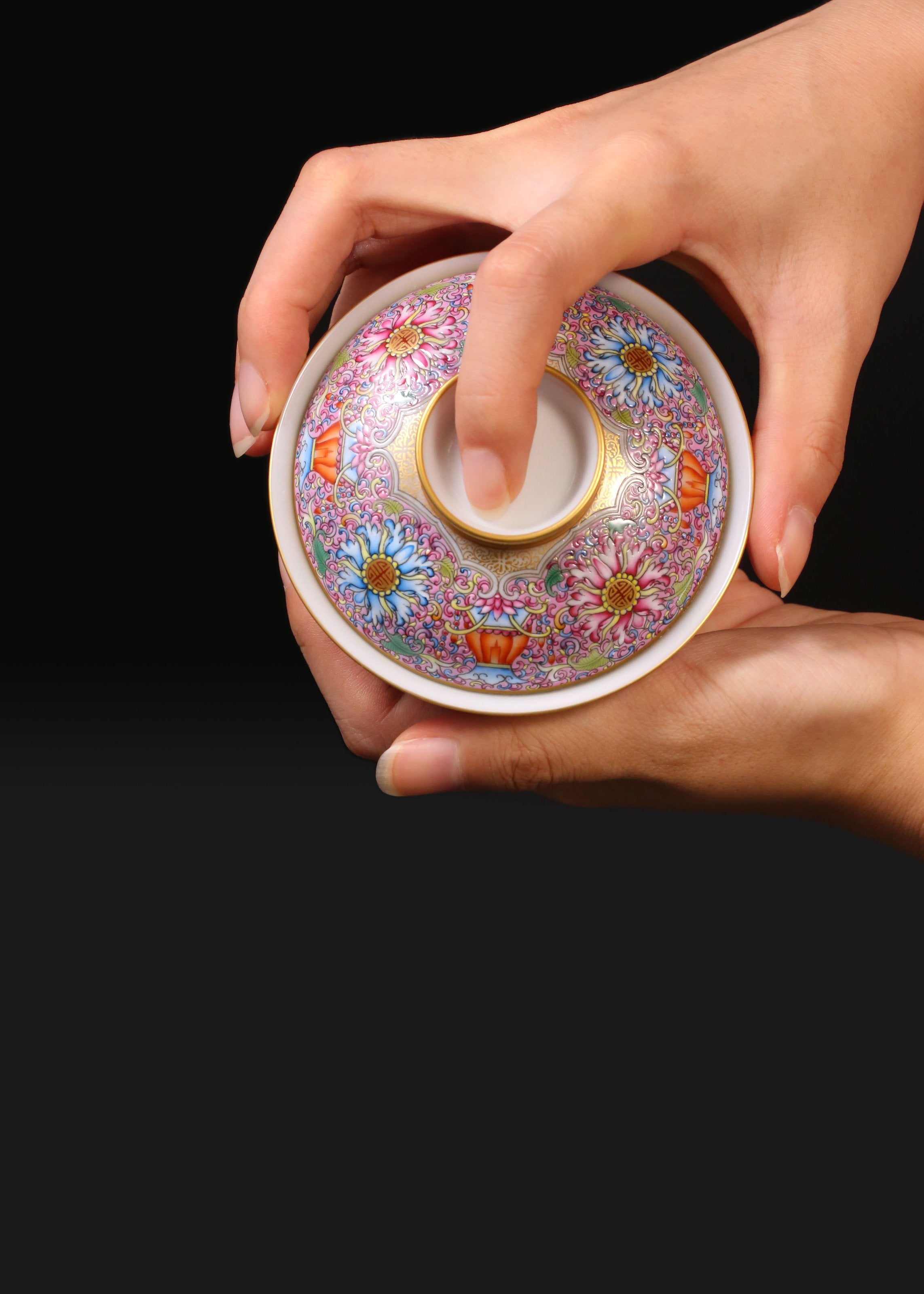

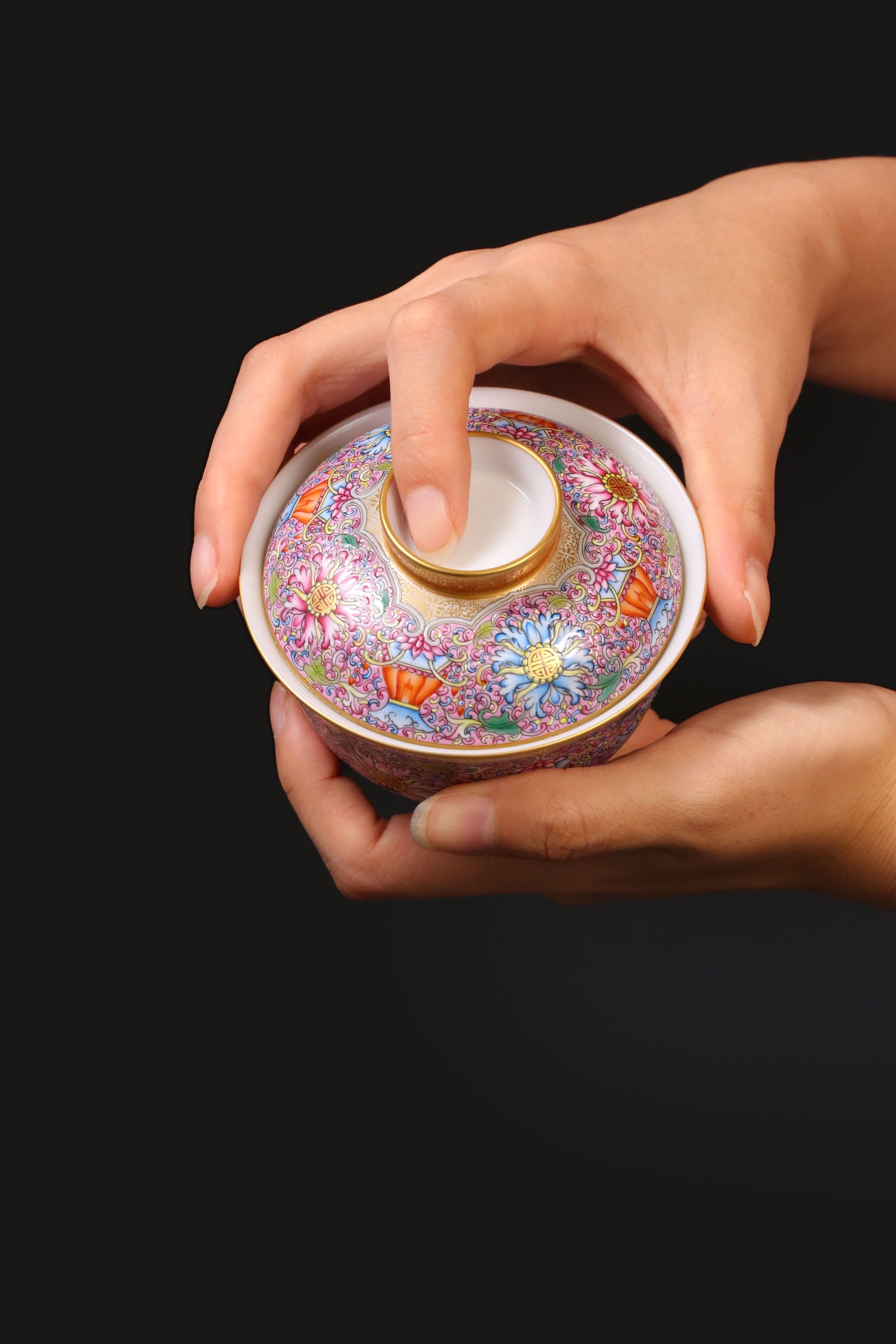




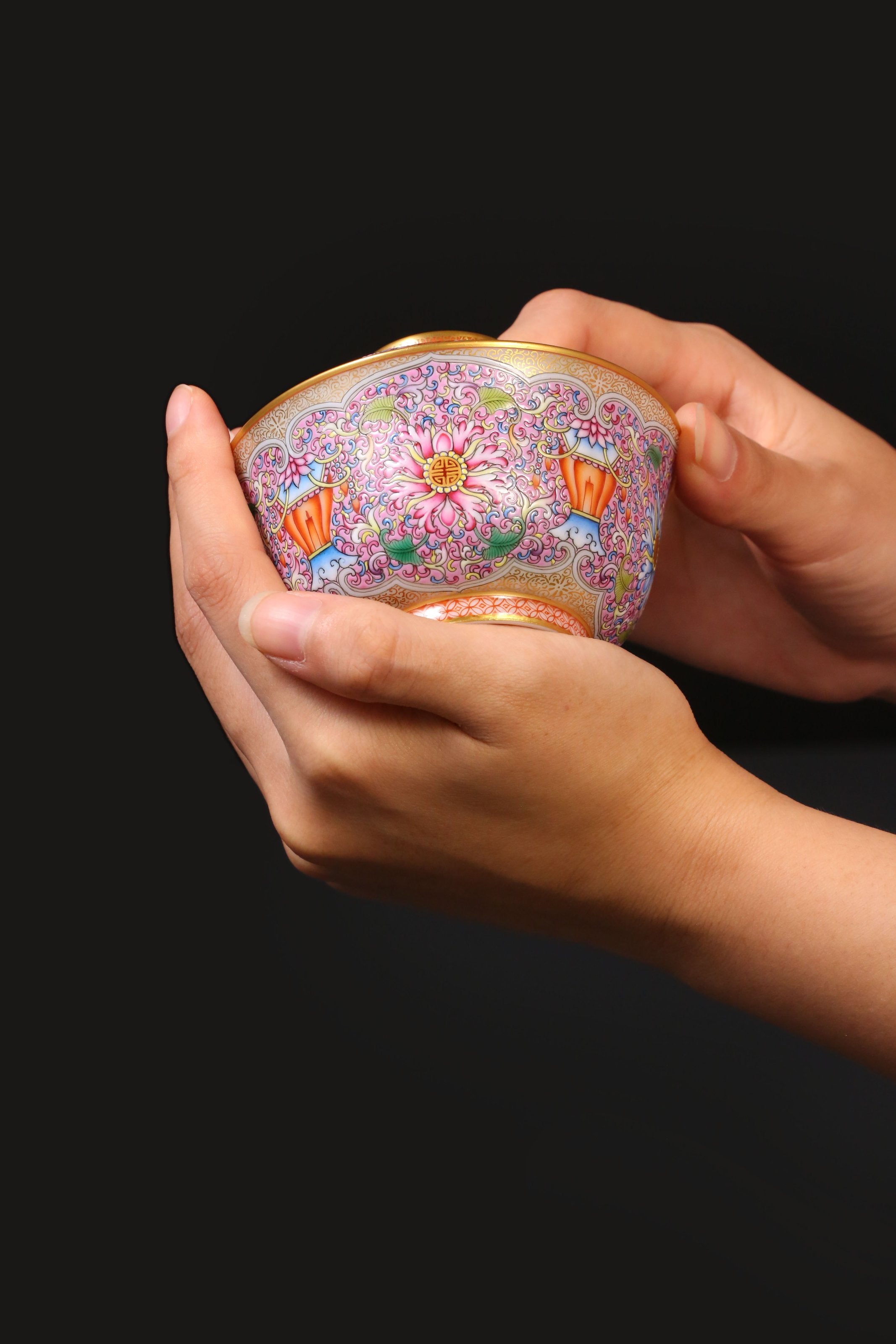

Dayazhai Longevity Lantern Covered Bowl
































Dayazhai Longevity Lantern Covered Bowl
Dayazhai Longevity Lantern Covered Bowl
Height: 4.8cm; Mouth diameter: 9cm; Capacity: 100ml
Vessel Type: Palace Lantern
Artist: dayatang
Material: Porcelain )
Specifications : Rim Diameter: 9cm; Overall Height: 4.8cm capacity 100ml (Capacity)
Height: 4.8cm; Mouth diameter: 9cm; Capacity: 100ml
Vessel Type: Palace Lantern
Artist: dayatang
Material: Porcelain )
Specifications : Rim Diameter: 9cm; Overall Height: 4.8cm capacity 100ml (Capacity)
Gu Yue Xuan Longevity Lantern Covered Bowl
It was created through the collaboration of several masters, including Master Zhang Jian, a master of overglaze gold painting in Jingdezhen.
The intricate and elaborate patterns in enamelware are known in the industry as Guyuexuan. The lines on this covered bowl are as fine as hair. This extremely delicate and inspired work is so exquisite that I feel it would require a magnifying glass to draw.
This piece was designed by Zhao Qingtao, the owner of Dayatang, based on the characteristics of Qing Dynasty covered bowls. Because it was made specifically for beautiful women, the size is slightly smaller.
Only one pair each of pink and blue was produced for this custom order. Absolutely unique. This piece is in blue tones.
Lantern pattern:
Lantern patterns are auspicious decorative motifs. Hanging lanterns is believed to pray for the addition of sons and wealth to the family. Lanterns are hung during Chinese New Year celebrations, with the Lantern Festival taking place on the fifteenth day of the first lunar month. In some dialects, the word for "lantern" is a homophone for "son," so "lighting a lantern" signifies "adding a son"; therefore, in some regions, it is believed that women walking under lanterns will have many children.
vine pattern:
The exterior is painted with enamel longevity characters and lotus scrolls, the veins of which are clearly visible. The scrolling lotus branches and leaves are graceful and dynamic, with vibrant colors and gold string patterns. Because of its continuous structure, which symbolizes "endless life," the scrolling pattern is also known as "longevity vine."
Lantern patterns were popular during the Ming and Qing dynasties; intertwined vine patterns originated around the Han dynasty and flourished during the Northern and Southern Dynasties, Sui and Tang dynasties, Song and Yuan dynasties, and Ming and Qing dynasties.
Enamel:
Besides the intricate and exquisite painting, the Guyuexuan Palace Lantern Teapot Covered Bowl requires four firings in the kiln to complete, each with its own risks.
Enamelware from the Qing Dynasty was originally intended for the enjoyment of emperors and empresses. Enamel is a special type of artificially fired pigment. Before the sixth year of the Yongzheng Emperor's reign (1728), it had to be imported from Europe. After the sixth year of the Yongzheng Emperor's reign, the Qing Palace workshops were able to refine more than 20 kinds of enamel pigments themselves, which is a product of the peak period of ancient Chinese polychrome porcelain craftsmanship.

Gaiwan and Gaiwan Tea Culture
Author: Wang Jianian
The ancients used a gaiwan (lidded bowl) as a tea utensil, which consisted of a teacup, a lid, and a saucer—three integrated components—for four main advantages: First, the teacup is smaller than a regular teacup and wider at the top than at the bottom, making it easy to pour water and allowing the tea leaves to settle at the bottom. When water is added, the tea leaves tumble, making it easier to extract the tea flavor. Second, the raised lid, with its rim smaller than the cup's opening, prevents slipping and helps to concentrate the tea aroma. It can also be used to shield the tea foam, preventing it from getting on the lips when drinking. Third, the saucer prevents burns and keeps clothes dry from spilled teacups, making it a more respectful way to serve tea to guests. Fourth, the gaiwan retains heat better.
In his essay "Drinking Tea," Lu Xun wrote: "To drink good tea, one must use a gaiwan (lidded bowl). So I used a gaiwan. Sure enough, after brewing, the tea was clear in color and sweet in taste, slightly fragrant and a little bitter—truly good tea." A gaiwan is a tea utensil consisting of a lid, a saucer, and a bowl; it is also called a "three-element bowl" or "three-element cup," where the lid represents heaven, the saucer represents earth, and the bowl represents humanity. Tea is considered a spiritual being nurtured by heaven, supported by earth, and cultivated by humanity. Pouring tea into a gaiwan symbolizes the unity of these three elements, working together to cultivate the essence of tea.
In the old days, people paid attention to the posture when drinking tea from a covered bowl. You could tell a person's profession from their tea-drinking posture. Consider the characters in dramas: if a scholar is drinking tea, his posture is very elegant. He holds the teacup in his left hand, pinches the lid in his right hand, and stirs the water. When drinking, he covers his mouth and nose with the lid, gently blowing and sipping the tea—that's called "refined." If a warrior is drinking tea, he grabs the teacup with his left hand and the lid in his right, vigorously stirring the water before gulping it down—that's called "guzzling." Then look at a female lead drinking tea from a covered bowl; her hand holding the lid is shaped like a delicate orchid finger—that's called "ladylike."
Nowadays, teahouses serving authentic gaiwan tea are rare, but Chengdu people still have this special fondness. There are over three thousand teahouses and tea pavilions of all sizes throughout Chengdu; teahouses can be found almost anywhere there are people. Drinking tea has become a part of life for Chengdu people, and a bowl of gaiwan tea offers a sense of leisurely respite from a busy life.
Chengdu teahouses use gaiwan (lidded bowls) as their teaware, a style traditionally used by the Mongol and Manchu peoples of northern China. Chengdu people have specific customs for drinking gaiwan tea: the first infusion is considered the "dregs," the second the "tea," and the third and fourth the "essence." This means the first infusion contains impurities and has an off-flavor, so it's usually discarded and refilled. The second infusion is where the flavor truly shines, and only after the third or fourth infusion does the tea reach its full mellowness. When refilling, one-third of the original tea water is left as "mother water," allowing the flavor to linger in the bowl, creating a rich and lasting aroma. To drink, one first inhales the aroma, letting the tea steep for a few minutes before opening the lid. The fragrance then fills the air, invigorating the senses and making one's mouth water. Holding the saucer in one hand and the lid in the other, one gently skims off any foam floating on the surface, then sips the fragrant tea.
Take a small sip, hold it in your mouth for a moment, let the aroma of the tea linger, and then slowly swallow. This will gradually create a pleasant and refreshing taste, and the tea's flavor will become smooth and melodious.
Drinking tea is an enjoyment. Tea drinkers sip their tea while chatting about life, sharing stories of friendship, and reminiscing about the vicissitudes of life. Many words are slowly spoken amidst the fragrant aroma of tea, and countless emotions are gently expressed in its lingering flavor. The aroma of tea soothes the work pressure and psychological burdens brought on by a fast-paced lifestyle. A cup of clear tea drives away mental gloom, washes away inner restlessness in the gentle breeze, and in moments of sudden enlightenment, reveals the true meaning of life.
Although small, covered bowls can embody the characteristics of porcelain making from various historical periods. Spanning from the Kangxi and Qianlong reigns to 1950 (a year with a clearly dated record), these covered bowls represent over two centuries, precisely the period when famille rose enamels were most prevalent. My collection includes several pairs of covered bowls from this period, which are particularly captivating. For example, one pair is exquisitely crafted, with a thin, fine body and a pure white glaze. The lid and body are meticulously painted with ink and famille rose enamels depicting distant mountains and nearby waters, mountain villages, figures, and thatched cottages. Ink-painted porcelain is a distinctive type of overglaze porcelain produced in large quantities during the Yongzheng period of the Qing dynasty. It involves painting designs on a white glaze with black pigment, followed by low-temperature firing. The brushstrokes on this pair of ink-painted covered bowls are delicate, the ink tones are varied and nuanced, and the overall effect is elegant, reminiscent of traditional Chinese ink wash landscape paintings.
The pleasures of collecting gaiwans: Gaiwans are a type of teaware with high cultural value. Many literati and artists designed and painted their own gaiwans, which were then commissioned by porcelain factories for firing and used by themselves or given as gifts to relatives and friends. Gaiwans made by famous artists are often masterpieces of their paintings. Gaiwans originated relatively late, with their heyday spanning from the Kangxi period to the Republic of China era. This short period makes them relatively easy to collect. Gaiwans are a niche item in the collector's market, and their prices are relatively low.
The gaiwan, a unique category combining Chinese tea culture and porcelain culture, holds a special place in my heart. This tea-drinking utensil, popular since the Kangxi period of the Qing Dynasty, was a symbol of social stability, economic prosperity, and cultural flourishing, as people began to pursue an elegant lifestyle. Drinking tea from a gaiwan is comfortable because the tea tray prevents burns, and holding the tray provides stability. The lid doesn't need to be completely removed; simply leaving it half-open allows the tea to slowly infuse without touching the tea leaves – a truly pleasant experience. The lid is placed inside the gaiwan. To make the tea stronger, you can gently scrape the surface with the lid, causing the tea to swirl. A light scrape results in a weaker brew, while a firmer scrape produces a stronger brew. Therefore, a good gaiwan allows one to discover the mysteries of nature, understand the philosophy of life, and appreciate the true essence of art while enjoying tea.






























Frequently asked questions
Use the FAQ section to answer your customers' most frequent questions.
Order
Yes, we ship all over the world. Shipping costs will apply, and will be added at checkout. We run discounts and promotions all year, so stay tuned for exclusive deals.
It depends on where you are. Orders processed here will take 5-7 business days to arrive. Overseas deliveries can take anywhere from 7-16 days. Delivery details will be provided in your confirmation email.
You can contact us through our contact page! We will be happy to assist you.





